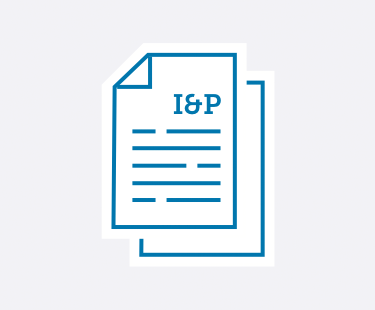

Learn practical strategies to handle emerging trends and leadership challenges in private schools.
No matter if you’re a School Head, Admission Director, Development Director, Board member, or any other private school administrator—Ideas & Perspectives®, ISM’s premier private school publication, has strategic solutions for the pervasive problems you face.
- Tuition not keeping pace with your expenses? In I&P, explore how to use strategic financial planning to create your budget and appropriately adjust your tuition.
- Enrollment dropping off? Discover how to implement the right admission and enrollment management strategies that engage your community—and fill your classrooms.
- Trouble retaining teachers? Learn how you can best support your teachers using ISM’s Comprehensive Faculty Development framework. Your faculty members will become more enthusiastic about their roles—which ultimately improves student outcomes.
- Fundraising campaigns not as successful as you’d hoped? Implement ISM’s practical advice and guidance to build a thriving annual fund, construct an effective capital campaign, and secure major donors—no matter your community size or location.
- Not sure how to provide professional development—for you and your staff? Learn ways to develop and fund a successful professional development strategy. You can improve teacher-centered satisfaction and growth, which in turn strengthens student-centered learning.
- Problematic schedule? You can master the challenges of scheduling with the help of ISM’s practical advice, based on our experience with hundreds of schools and our time-tested theories.
- And so much more.
I&P has shared targeted research, up-to-date insight, and sound theory with school leaders since 1975. More than 8,500 private school decision-makers find the answers to their schools’ administrative and governance matters in our advisory letter. We give you the strategic answers you need.
As an ISM Silver or Gold member, you not only receive issues online and in print 10 times a year, but you have access to 900+ articles in our web archive. Need help? It’s at your fingertips! Learn more and sign up for ISM's membership here.
Search
See the articles from our latest issue of Ideas & Perspectives.
The Three Spheres of Influence: Market Position
Volume 42 No. 3 // March 7, 2017
In the previous issue of I&P, we introduced the three spheres of influence. This article focuses on the sphere dedicated to Market Position. Following articles will highlight the other two spheres—School Culture and Constituent Relations. In ISM parlance, “market position” consists of components and stances meant to convey who you are as a school. Ideally, your competitive niche reflects the ways in which your school is uniquely different from your competitors. The market position sphere of influence uses two ISM tools—Price, Process, Product and Purpose and Outcome statements. These act as foundations for a school’s success in recruiting new students and families, representing a mission-based, student-centered, “inside-out” approach to enrollment marketing.
1. Already a member? Click here to login.
2. Not a member? Click here to become a member.
3. Not sure? We'll help you figure it out.
The Strategic Board Assessment II
Volume 42 No. 3 // March 7, 2017
ISM has completed a two-year analysis of the relationship between ISM’s long-established Strategic Board Assessment instrument and the six ISM Stability Markers® that are largely determined and driven by Board decisions and policies. We now offer this update and revision of the original instrument. With one exception, the items are the same as in the first iteration, but the scoring of the instrument has been altered dramatically so that Board leaders can prioritize and focus structure and function with more precision.
1. Already a member? Click here to login.
2. Not a member? Click here to become a member.
3. Not sure? We'll help you figure it out.
ISM’s Success Predictors: Update and Revision, Part Two
Volume 42 No. 2 // February 13, 2017
In the previous issue of I&P, we offered Part One of our first update and revision of the ISM Success Predictors—not to be confused with the ISM Stability Markers®—which represent ISM’s deliberately considered speculation about what will be needed in private-independent schools as they adjust to the always-changing technological, educational, and cultural milieu in which they move. The ISM Success Predictors, unlike the ISM Stability Markers, are not evidence-driven in the same way, i.e., are not conclusions from data analysis. Since evidence of efficacy is impossible to gather before widespread use, readers should understand that the ISM Success Predictors are forecasts—not conclusions from data—of what ISM expects to be needed to achieve long-term success in the private-independent school marketplace.
1. Already a member? Click here to login.
2. Not a member? Click here to become a member.
3. Not sure? We'll help you figure it out.
Paying Your Summer Program Director
Volume 42 No. 2 // February 13, 2017
As the Business Manager, how should you think about the Summer Program Director position? It can include diverse roles and responsibilities and so there is no single or simple answer. For some schools, this is a full-time position with over 1,000 students participating over eight weeks. For others, it is a nascent program of two weeks with 80 participants.1 Methods of compensation are equally diverse. A cross-section of typical attitudes includes: FTE with salary and benefits (usually including extended care through the year); an addition to a full-time position, such as teacher with a stipend attached; and for the person directing the program, his or her children attend for free for the summer.
1. Already a member? Click here to login.
2. Not a member? Click here to become a member.
3. Not sure? We'll help you figure it out.
Admission and Enrollment Management: Spheres of Influence
Volume 42 No. 2 // February 13, 2017
As the Admission Director or Marketing Communications Director, you know that your school’s primary and frequently only source of hard income revenue comes from enrollment. This is rightly the focus of many, if not most, private-independent school strategic plans. To ensure strength in your enrollment position—whether your goal is growth, stasis, or “right sizing” your school to ensure mission excellence—there are three spheres of influence within which almost every other possible factor impacting your enrollment outcomes reside: market position; school culture; and constituent relationships.
1. Already a member? Click here to login.
2. Not a member? Click here to become a member.
3. Not sure? We'll help you figure it out.
For Parents to Trust You With the Big Things, First Take Care of the Little Things
Volume 42 No. 1 // January 13, 2017
Schools frequently wish they enjoyed more positive interactions with parents. Teachers often lament the “good old days,” when parents trusted teachers and school administrators almost implicitly—and would not question, let alone protest, the advice or approach of educational professionals. Parents still evaluate what happens at school through the lens of their own educational experiences, or the experiences of their older children. They may also bring expert information to bear—even the findings of educational research—on their ongoing conversation with school community members about their children’s progress and learning experiences.
1. Already a member? Click here to login.
2. Not a member? Click here to become a member.
3. Not sure? We'll help you figure it out.
Multiple Uses of Landscaping
Volume 42 No. 1 // January 13, 2017
A modest investment in landscaping can make a significant difference in a school’s appearance. Attractive, well-kept grounds build pride in your school—among your staff, students and their families, and in the community. Consider these guidelines to make the most of your grounds.
1. Already a member? Click here to login.
2. Not a member? Click here to become a member.
3. Not sure? We'll help you figure it out.
ISM’s Success Predictors: Update and Revision, Part One
Volume 42 No. 1 // January 13, 2017
ISM periodically issues revised and updated versions of its Stability Markers, a list of evidence-based variables that, according to ISM data, comprise the critical elements in underwriting a private-independent school’s long-term viability. The ISM Stability Markers have been in widespread use by Boards of Trustees and senior administrators, both as a lens through which to self-evaluate and as a vector on which to move to strengthen a school’s longest-term financial and organizational stability and excellence. ISM here offers its first update and revision of the ISM Success Predictors—not to be confused with the Stability Markers—which represent ISM’s deliberately considered speculation on what will be needed in private-independent schools as they adjust to the always-changing technological, educational, and cultural milieu in which they move. The ISM Success Predicators, unlike the ISM Stability Markers, are not evidence-driven in the same way, i.e., not as outcomes of data analysis. Since evidence of efficacy is impossible to gather before widespread use, readers should understand the ISM Success Predictors are forecasts—not conclusions-from-data—of what ISM expects to be needed to achieve long-term success in the private-independent school marketplace.
1. Already a member? Click here to login.
2. Not a member? Click here to become a member.
3. Not sure? We'll help you figure it out.
Creating Divisional and Departmental Mission Statements
Volume 42 No. 1 // January 13, 2017
The Board of Trustees and the School Head are entrusted with creation of the school’s mission statement; that is amplified through development of the Portrait of the Graduate and the Characteristics of Professional Excellence. Collectively, these documents are called Purpose and Outcome Statements. What do they mean, however, for the life of each division and department?
1. Already a member? Click here to login.
2. Not a member? Click here to become a member.
3. Not sure? We'll help you figure it out.
What You Need to Know About the New Fiduciary Rule
Volume 41 No. 16 // December 19, 2016
You, as School Head or Business Manager, may be aware of the new Department of Labor (DOL) guidelines issued on April 6, 2016, as they pertain to fiduciaries. Generally noted as the “Fiduciary Rule,” it will be phased in with initial compliance obligations beginning on April 10, 2017, and full compliance expected by January 1, 2018. The new rule amends regulations related to the Employee Retirement Income Security Act (ERISA). It mainly targets financial advisors, broker/dealers, and insurance agents who give investment advice and/or sell annuities and other investment vehicles used in 403(b) and 401(k) accounts found in many employer plans and in IRA pension plans. This article primarily focuses on 403(b) and 401(k) plans.
1. Already a member? Click here to login.
2. Not a member? Click here to become a member.
3. Not sure? We'll help you figure it out.


